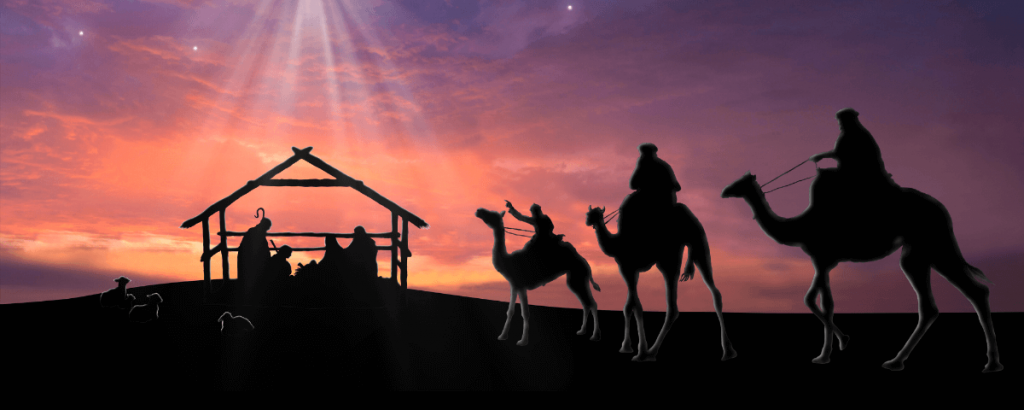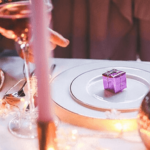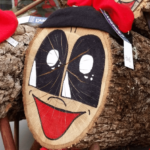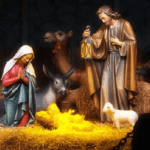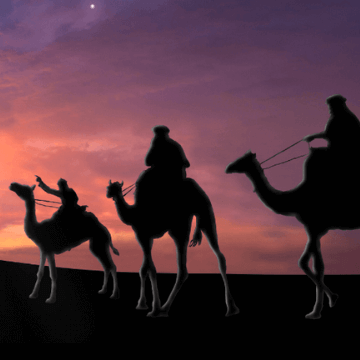
What is the Day of the Three Kings in Spain?
WHAT HOLIDAY IS CELEBRATED IN SPAIN ON JANUARY 6TH?
Christmas season is long in Spain! It starts on December 24 with Christmas Eve, and this week we are celebrating the last special day before it ends. January 6 in Spain is the day of the Three Kings, when Spanish kids receive their gifts. Also known as Epiphany Day, January 6 is a bank holiday – so don’t expect shops to be open that day. And while January 7 is a normal day, children won’t go back to school until January 8 so they have one more day to enjoy their new toys.
As you can see, the Day of the Kings in Spain has everything to be a favorite kids Christmas tradition, but adults also enjoy it a lot. So join the fun: we tell you how!
Some background about the celebration of the Three Kings Day in Spain
1
The Christian origin of Epiphany Day
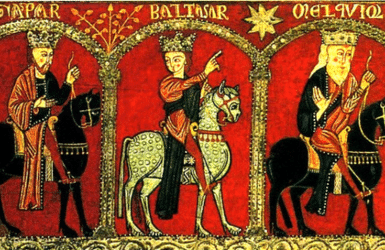
Christians celebrate that the Three Wise Men from the East followed a shooting star to find the Baby Jesus, Mary and Joseph in Bethlehem. According to the gospel of Matthew, the only one of the 4 "official" gospels that mentions this part of the story, they brought gold, incense and myrrh as gifts for the Baby Jesus. Gold represents wordly power, incense is divinity and myrrh, used to embalm bodies, mortality. Because of that, January 6th, the Epiphany Day, is a holy day of obligation for Catholics, who are required to attend mass.
2
Who were the 3 Kings of the East?
Because the Gospels were written in Arameic, the exact translation of their name is inexact. The most common way to refer to them is the Three Kings, but in English you also see them called the (three) Wise Men or the Magi. In Spanish they are called the Reyes Magos, or simply the “Reyes” (de Oriente). And in Catalan we also call them Reis Mags or Reis (d’Orient).
Their names were Melchior, Caspar and Balthazar. Melchior (Melchor in Spanish, Melcior in Catalan) came from Persia and is traditionally represented as an elder man with white hair – he is the one bringing gold as a gift. Caspar (Gaspar in both Spanish and Catalan) came from Babilon and is depicted as an adult with blond hair, bringing the gift of incense. Finally, Balthazar (Baltasar in Spanish and Catalan) came from Africa and is a black man gifting the myrrh.
Curiously, Balthazar’s appearance only became fixed as an African magi after the 1400’s: until then black and arabian were the enemy of the Christians and the society wouldn’t have accepted a black Wise Man. So early on he was represented as a young callow European, hence the 3 Kings would have symbolized the 3 stages of life.
3
Are the Three Kings the only ones to bring presents to children in Spain?
No, actually Spanish kids are very privileged: they can receive presents several times during the Christmas holidays. The Three Kings Day is a big favorite, and presents tend to be larger than in other dates. However, in certain regions of Spain kids also get presents on Christmas Day. In Catalonia it’s the Tio de Nadal, a log that “poops presents”, which are usually smaller than those that the Wise Men bring: obviously a bicycle won’t fit under the Tio’s blanket. And in the Basque Country and Navarra, it’s the Olentzero, a coal merchant, who brings the presents. In Galicia it’s also a coal merchant: the Apalpador or Pandigueiro, and in Asturias it’s an eel fisherman, the Angulero. In Cantabria, it’s the wood fairies called Anjanas and the woodcutter Esteru. And everywhere else in Spain, Santa Claus is climbing positions due to globalization.
Three Kings Day traditions in Spain
4
Everything starts with a letter to the Wise Men
As Christmas approaches, Spanish kids eagerly write a letter to the Wise Men (or just to their favorite, as every kid has one and it’s usually the black one), telling them or him how good they’ve been and giving them a list of the presents they want to receive. The letters are then given to the page boy of the Magi, that usually has a stand set up at some prominent place in their city or village.
Unlike for Santa, in Spain there’s no “elf in the shelf” spying on the kids. The 3 Kings are “magical” and just know if the kids are behaving or not. But I once heard a smart mom sharing her trick: since in Spain there aren’t many people with dark skin, whenever she saw a black man during the Christmas holidays she’d whisper to their kids: “look out, I think that guy is one of the Reyes spies!”. LOL.
5
January 5 toy donation campaigns
Although it’s not exactly an old tradition, it’s become common for local institutions to organize toy donation campaigns on January 5, to make sure no kid will be left without a present the next day. Toys need to be new (or be as good as new). One of the most famous campaigns in Barcelona is the one organized by Radio Barcelona on Casp st. So if you are in Spain that day, you can also help the 3 Kings spread joy!
6
The Parades of the Day of the Kings
Also, just like Santa, the 3 Kings also get their parades. In Spain they take place during the Evening of January 5th, when the Reyes Magos arrive to the cities and villages of the country. In coastal towns they commonly arrive by sea: on a luxurious yacht, or a traditional fishing boat, or a motor boat. But in other areas they might arrive by land or even from the air by helicopter! Anything for a good show!
After disembarking they mount on their camels, or budget allowing, some fancy floats and they parade the streets throwing candy to the public that came to watch. The parades usually incorporate other floats (one for the shooting star, one for the present boxes, one for the coal for the naughty children…), as well as musicians, dancers and other street performers. At the end of the parade the Magi are received by the city authorities, who give them the key that opens the doors of all the homes of the city (that’s easier than Santa’s job down chimneys!). Or in some small villages, the kids line up to be given their gifts by the Wise Men in person.
Top parades of the Day of the Three Kings in Spain
The Three Kings parades in Barcelona and Madrid are some of the most spectacular, lasting for 2 hours or longer and attracting thousands of people that arrive well in advance to secure the best spots along the itinerary. They are often broadcast on TV. But besides the main “cavalgata” (parade in Spanish), many districts also celebrate their own parade at a smaller scale which is perfect for smallest kids and people who don’t like crowds.
The oldest parade of the Day of the Kings in Spain is that of the town of Alcoi, near Alicante (CA de Valencia), documented since 1866. There the pages of the Kings use their wooden ladders to climb to the balconies of the houses and give presents to the local kids. The second oldest, from 1895, is the parade of Igualada near Barcelona, where the Three Kings arrive with 500 pages dressed in black.
7
Preparing for the arrival of the Three Kings
Next the kids need to choose a shoe to leave in the living room, maybe under the Christmas tree, so the Magi know how many people are expecting presents tonight, and who are they (parents are also allowed to leave a shoe!). It’s also a good opportunity to make the kids polish their shoes (although nowadays kids shoes aren’t so much the kind that need polishing really…). Some blogs suggest leaving them outside the bedroom doors, but I object to that: the presents will be left next to the shoes, and there’s not enough room in the corridors to leave them, plus it’d be too risky for the Wise Men to approach the bedrooms so much.
Finally it's January 6th!
8
The morning of January 6th
For some reason kids tend to wake up early on January 6th in Spain, and they’ll run to the living room to find the presents. But no one is allowed to open anything until the whole family is awake! I’ve also heard that in some households the Kings hide the presents and the kids need to raid the house to find them: inside the bathtub, in a closet… That makes the whole thing even more fun, even if it’s not entirely canon.
After opening the presents and having some play time with their new toys, it’ll be time for breakfast (maybe hot chocolate with churros?) and getting dressed. Then will start a tour around the homes of the relatives that aren’t having the Three Kings Day lunch with them because they are going to other relative’s homes. The Kings might have left presents for them there, too! Traffic in the big cities is bad that day because of that…
BTW, if you set up a Nativity scene, before leaving the house it’s traditional to move the figurines of the three Wise Men and their pages to the front of the stable, symbolizing that they have finally arrived to their destination. The figurines are supposed to be set up at the furthest end of the Nativity at the beginning, and move a tiny bit closer to the stable every day.
9
Family lunch and Roscon de Reyes for dessert
This Three Kings Day cake is a ring-shaped sweet bread topped with candy fruit and traditionally stuffed with marzipan (although you’ll also find it stuffed with whipped cream or truffle cream), similar to a Mardi Gras King cake. Baking it requires being very skilled, so most families order it in advance from their favorite bakery (and the lines to pick them up are long!) The stuffing of the Roscon de Reyes hides two surprises, a good one and a bad one. If you happen to receive the piece of cake that hides the fava bean, that’s the bad one: you’ll have to pay for the cake next year! But if you get the little king figurine, then you’ll be crowned king of the day and you’ll have the right to wear the golden paper crown that came with the cake.
And after the Kings Day meal, Christmas time will officially be over! Time to take the Christmas decorations down. Children will still be given another day off so they can enjoy their new toys before going back to school on the 8th after almost 20 days of holidays. As for adults… well, they’ll be expected to be back to work on January 7 if it’s a weekday, and it’ll be time to start dieting after so much food and wine these days!
Will you celebrate the Epiphany in Spain?
Marta
RESEARCHING FOR A TRIP IS TIME-CONSUMING…
Need more inspiration?
Our 100% FREE Barcelona Collection will give you everything you need to organize the trip of your lifetime to Barcelona.
BEST INSIDER TIPS FROM THE PROS!


